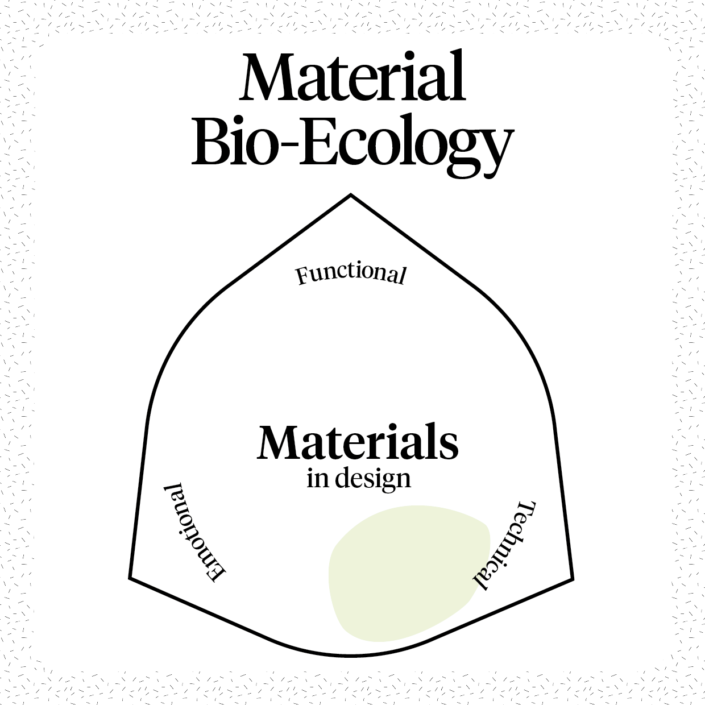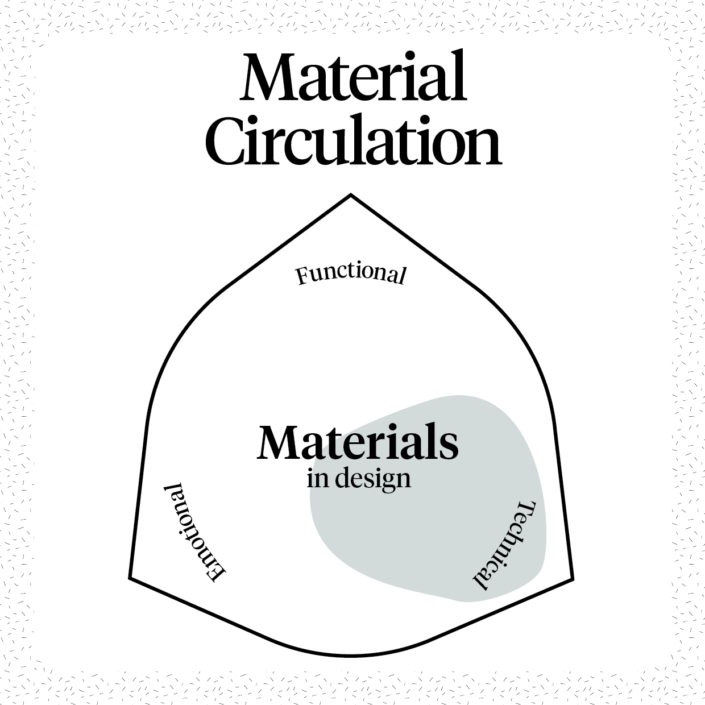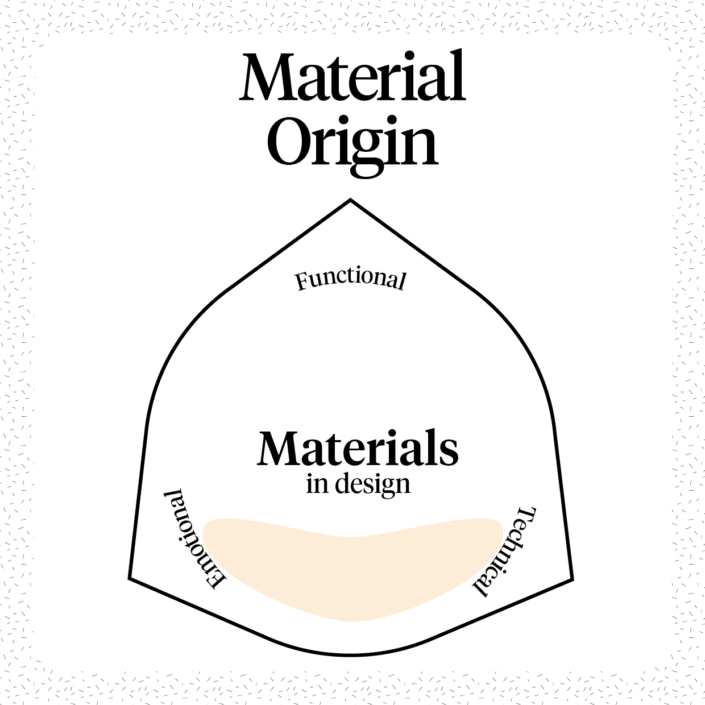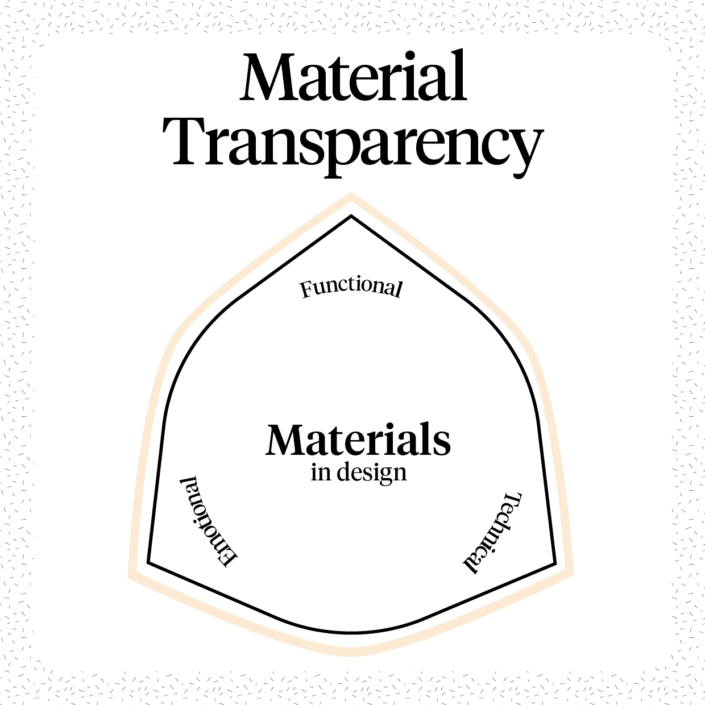What?
Material geographies considers the geographical journeys materials have undertaken through sourcing and production. This covers aspects of local sourcing and production, but also how a globalised production system gives easy access to geographically distant resources.
Why?
Material geographies can minimise use of resources i.e. transport cost, CO2 emission and support user understanding through transparency within the supply chain. Furthermore, it can create awareness on mono-cultural production, loss of biodiversity and building material resilience.
Challenges
- It is not always easy to gain insights on material origins and their production process and thus to influence it when sourcing.
- Minimising material flows may limit material diversity and quantities, and cost of materials could be significantly higher.
Examples
- Atelier NL develops tangible, everyday objects that illustrate the value of local raw materials both in sourcing and production.
- India Flint experiments symbiotically with local plants to discover colours and develop eco-prints to tell narratives of her environment.
- The Bottle-Up initiative in Zanzibar employs local craftsmen to transform the substantial glass waste.
Further Reading
Bridge (2011). Resource geographies 1: Making carbon economies, old and new. Progress in Human Geography 35 (6), pp. 820–34.
Cullen, Allwood & Bambach (2012). Mapping the global flow of steel: from steelmaking to end-use goods. Environmental science & technology 46 (24), pp. 13048–55.
Manzini (2016). Resilient systems and cosmopolitan localism — The emerging scenario of the small, local, open and connected space.













